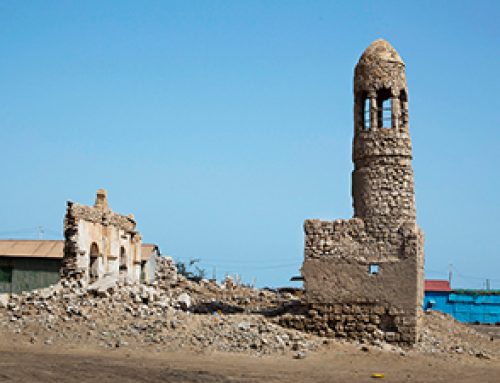
What is flint? Flint is a sedimentary rock made out of an igneous rock.
What is flint made of?
It’s pretty complicated. Billions of years ago, silicon and oxygen atoms shot out of a star when it went supernova.
What is a supernova?
All our geology articles
About four billion years ago, some of those atoms came together with other atoms to make the Earth. Then the silicon and oxygen atoms shot out of a volcano and cooled together in a crystal pattern into quartz – an igneous rock.
More about quartz
What is an igneous rock?
What causes volcanoes?
About three billion years ago, a lot of bits of quartz became part of one-celled sea creatures – prokaryotes. When millions of those prokaryotes died, they sank to the bottom of the ocean, and the quartz in them got squashed together into a sedimentary rock – that’s chert, and some kinds of chert are known as flint.
What is a sedimentary rock?
More about early living cells
Where do you find flint?
Considering how complicated it was to make it, flint is actually pretty common! You can find flint all over China, West Asia, North Africa, and Europe. Usually there are little pockets of flint mixed into bigger layers of limestone (which is also a sedimentary rock, formed from the shells of tiny sea creatures).
Find out more about limestone
When did people start to make stone tools?
The first people who made stone tools on purpose lived in Africa about three million years ago. We call them Homo habilis. They made hand axes and scrapers.
Stone tools in Africa
Early primates
Why did people use flint for stone tools?
Flint is easier to knapp (to shape) than a lot of other kinds of stone, and it will hold a sharp edge longer, so in the Stone Age people made most of their tools out of flint. That’s because flint is made of tiny bits of quartz. So it’s very fine and smooth, which is great for getting a sharp edge on your knife or arrowhead. Flint’s not as good for tools as obsidian, but it was more common, so it was easier to get.
What’s obsidian, then?
How did people make flint into tools?
There are two ways of knapping flint. The older way was to take a rock and knock off bits until you had a sharp edge, and use that as a tool. That was easy and quick to do, but it took a lot of flint for each tool.
Here’s a video of some young men knapping flint.

Flint arrowheads or spear tips (North Africa)
A more efficient way to make flint tools
People who had trouble getting enough flint for everyone thought of a better way: take a rock and knock off bigger flakes, and make each one of those flakes have a sharp edge. People figured this out about 300,000 years ago. Homo Sapiens, Neanderthals, and Denisovans all made this kind of core-based flint tools.
More about Neanderthals
More about early humans
With this method, you can get twenty or more tools out of the same rock that made only one tool before. These flint arrowheads or spear tips are an example of the second way of making flint tools. It’s not just spears, knives, and arrowheads, either. You can also use flint to make an awl, for poking holes to sew things (like a needle), and to make scrapers (to get the fur off skins and make leather.) Flint tools were important for making clothing.
Who invented sewing?
What is leather?
Stone Age clothing in Central Asia

A bone sickle – the flint teeth are missing now
You could also insert tiny sharp chips of flint into a bone to make a saw or a sickle for harvesting grain.
Harvesting grain
Where does wheat come from?
Try it for yourself!
If you can get flint, you can try knapping it yourself. Just knock one piece hard against another. It’s not hard to make the first kind of tool, but it is a lot harder to make the second kind.
Did you find out what you needed to know about flint? Let us know in the comments!



